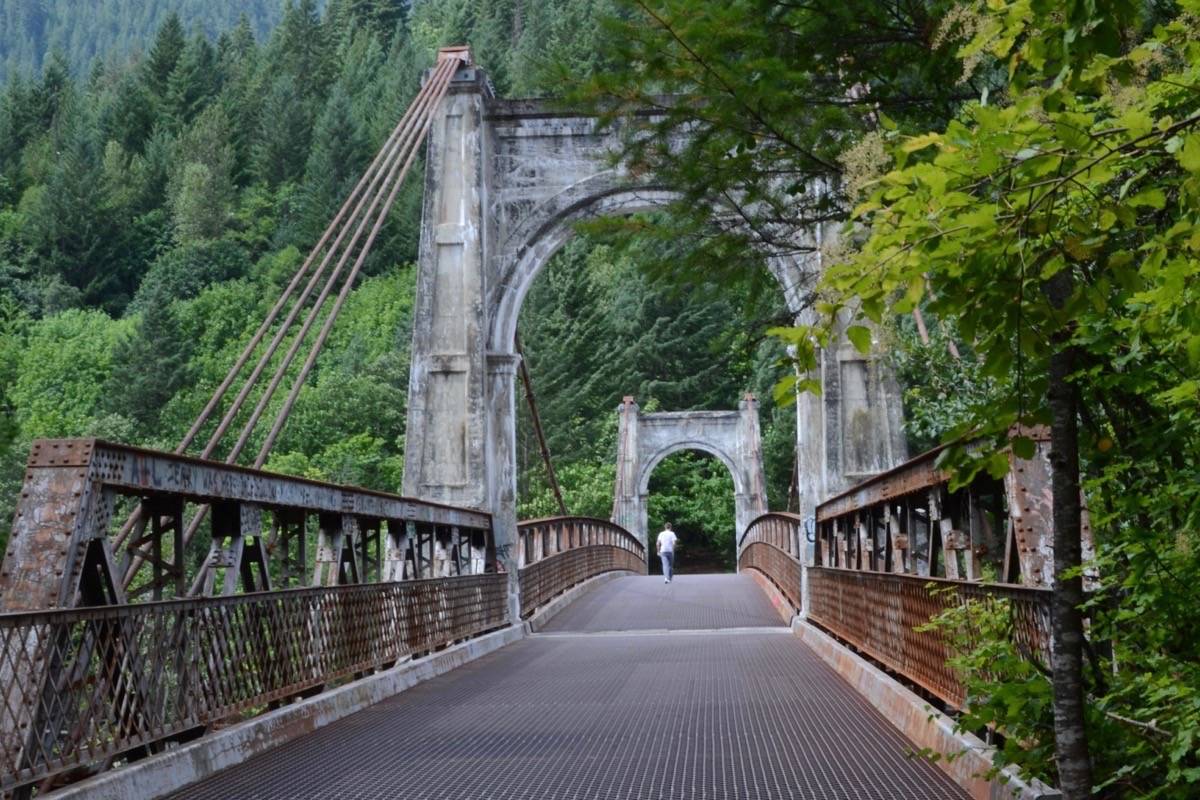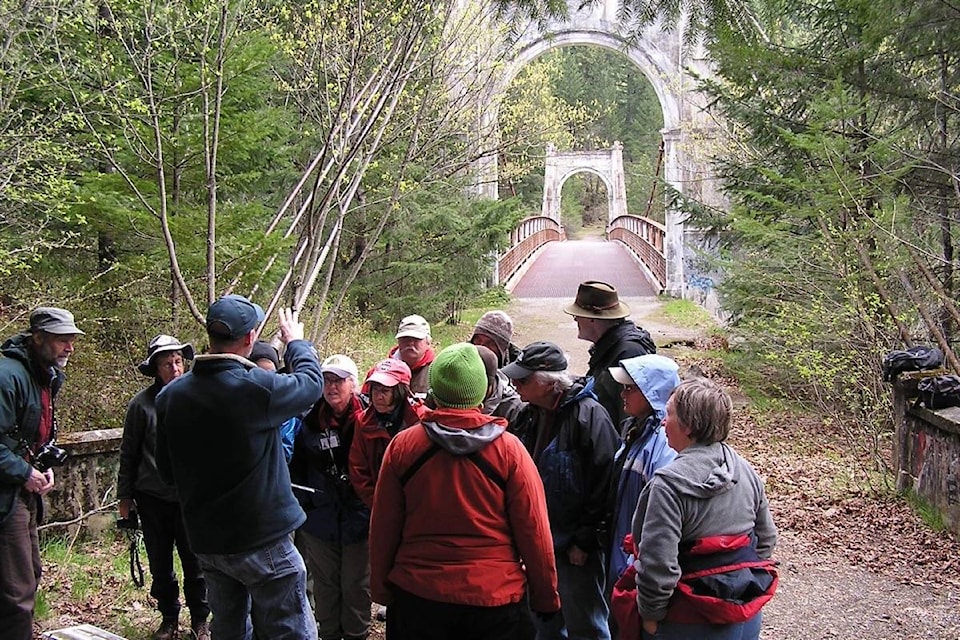A historic bridge that was built nearly a century ago, and which has not carried vehicle traffic since 1964, will be getting some tender loving care thanks to a major grant.
The New Pathways to Gold Society (NPTGS) has received $500,000 in funding from the Community Economic Resiliency Infrastructure Program to perform stabilization work on the historic 1926 Alexandra Bridge near Spuzzum. The funding will go towards repairing the bridge support towers and structural features, including cement work; restoration of moldings and relief panels; repairing handrails; and installing a plaque acknowledging the historic crossing point across the Fraser River, in partnership with the Spuzzum First Nation (SFN).
“This grant is the result of years of hard work by the project partners who want to restore the 1926 bridge structure, but also reinvent the entire Alexandra Bridge Provincial Park precinct in partnership with the Spuzzum First Nation,” says NPTGS co-chair Terry Raymond.
“This is a significant milestone in the campaign to create a world-class heritage tourism asset in the Fraser Canyon that will benefit communities from Hope to Barkerville.”
There have been three bridges at the site just north of Spuzzum, which has been a crossing point on the Fraser for millennia. The first bridge, completed in 1863, was an important link in the Cariboo Waggon Road, which connected the coast with the goldfields of the Interior. It was badly damaged by flooding in 1894, and the road fell out of use in favour of train travel.
In 1926 a second bridge was completed at the site, using the footings of the original bridge. When the Fraser Canyon portion of the Trans-Canada Highway was built in the early 1960s, a new bridge was built south of the 1926 bridge, which was decommissioned in 1964.
The old Alexandra Bridge is the responsibility of the Ministry of Transportation and Infrastructure, one of the project partners working to restore the structure. In 1984, the Province opened Alexandra Bridge Provincial Park, which provides access to the 1926 bridge via a walking trail from the rest area/picnic site near the highway.
“That steep incline from the park was the old Cariboo Highway, and before that the Cariboo Waggon Road,” says Don Hauka, creative/communications director of NPTGS. “There’s a curve, and the canopy of woods opens up and you see that first magnificent arch of the eastern tower, then that wonderful span across the river.
“What strikes me every single time is the openness of it. There are few chances to see the river in all its glory, and it’s not a solid span; it’s old highway grating, so you look right down into the river. Some people like it and some people don’t. If you don’t, just keep your eyes on the towers.”
Hauka says that the bridge in its current state is safe. Those who cross to the western side can walk for a short distance, but a giant washout that has grown larger over the years separates visitors from an intact section of the former road that heads toward Yale. However, he says that people who want a nice little walk should take note of a small, unmarked trail on the eastern side.
“There’s a little trail on the right, just before you get to the bridge, and after a few metres you’re on an intact portion of the Cariboo Waggon Road that used to lead to Alexandra Lodge. It’s a beautiful walk along the river, and it’s part of the network we hope to restore.”
Restoration of the hsitoric bridge is a critical component of the SFN’s economic development plan for the area.
“The 1926 Alexandra Bridge is the centrepiece of our strategy to reinvent and reinvigorate these lands in the heart of our traditional territory,” says SFN Chief James Hobart, who is also an NPTGS Director.
“Working with our partners we’re building Indigenous, heritage, and other tourism assets and amenities that will provide employment for our people and folks in other communities along the Hope-Barkerville corridor. We’re incredibly excited to get to work to start repairing the bridge and preserving it for future generations.”
Hauka says that for New Pathways to Gold, the old Alexandra Bridge is a gateway attraction, and a grand entrance way to the Gold Rush/Spirit Trails corridor that stretches from Hope to Barkerville.
“It’s a major anchor and a marquee attraction. One of the great things about Alexandra Bridge is that it’s quite close to the Lower Mainland and a large pool of tourists. It’s an easy day’s drive up and back and a beautiful trip, and we hope it will encourage tourists to go further and further.”
It’s hoped that work on the project will start this summer, although Hauka acknowledges that there are a lot of partners and a lot of moving pieces to work with.
“This will mark the first time in a long time that maintenance has been done on the bridge. It’s rehabilitation work, not just sprucing it up. The bridge was built in 1926 on the footings of the 1863 bridge, so it’s a unique structure.
“The building of the Coquihalla meant a gradual decline in the use of that corridor, and we hope that projects like this will shine a light on a forgotten route. The charm of Highway 1 is that you can get out and stop all over the place, and hopefully this will be one more of those places.”
editorial@accjournal.ca
Like us on Facebook and follow us on Twitter

